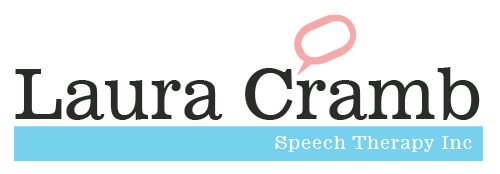In order to know how you can do speech therapy at home, it is important to understand how a speech-language pathologist would work with your child. Let’s take a look:
Step One: Assessment:
What the SLP Will Do:
First, the SLP will do an assessment of your child, which will include looking at all areas of speech and language development to see which areas your child is delayed in. They decide this by comparing your child’s performance to developmental norms. This means, what typically developing children are able to do at that age.
Step Two: Choosing Goals:
What the SLP Will Do:
Next, the SLP will choose a few of these problem areas to work on at a time. Many times, children with speech and language difficulties have problems with several areas. It is important when you begin therapy to select a reasonable number of goals to address at first. The SLP will typically choose these based on which problems are affecting communication the most, or which skills are typically developed the earliest. For example, if a child is only able to speak a few words but also has trouble with the /s/ sound, the speech therapist will choose to teach him/her more words before beginning to address specific sounds.
What You Can Do for Speech Therapy At Home:
Choose 2-3 of your child’s areas of weakness to address. The best way to choose targets for parents is to pick what’s affecting your child and your family the most. For example, if your child has a lot to say but no one can understand him because of sound errors, you could pick a few speech sounds to work on. Or, if your child has difficulty following directions and it is interfering with your daily routine and family life, you may want to start there. Try to avoid choosing goals that the milestones guide above says are well above your child’s age level or far away from what he’s currently able to do, but really anything you choose to work on with your child for speech therapy at home will do him/her good.
Step Three: Providing Therapy
What the SLP Will Do:
Your child’s speech therapist will be trained on the best therapy methods available for each type of disorder and delay. All SLPs must take part in continuing education opportunities that will advise them of what the research is saying about various therapy techniques. Each child is different and will respond to different therapy methods. The SLP’s job is to choose the right therapy technique for each child and to adapt therapy when the child does or does not respond to a specific technique.
What You Can Do for Speech Therapy At Home:
This is the part where I tell you that it is very important to be working with a speech-language pathologist so they can choose the therapy approach that will work best for your child. After all, that’s why they have a Master’s Degree! But there are some basic approaches that you can try during speech therapy at home to help your child. The idea is simple: break each skill down into smaller or simpler pieces and specifically teach them to your child. For example, if you want to teach your child to use the /f/ sound correctly in conversation, you can start by teaching your child how to say the sound by itself (“fffffff”), then in syllables (“fuh”, “oof”), then words (“fish”, “roof”), and then begin putting those words in sentences and conversation. Or, if you want to teach your child how to follow multi-step directions, you could start with very basic short directions with a picture cue (like “sit”, “stand up”, “come here”) and gradually work your way up to more complex directions and putting two or three-step directions together.
If this sounds complicated, don’t worry! You can do this! You just need to get into the mindset of breaking skills down into smaller pieces.




